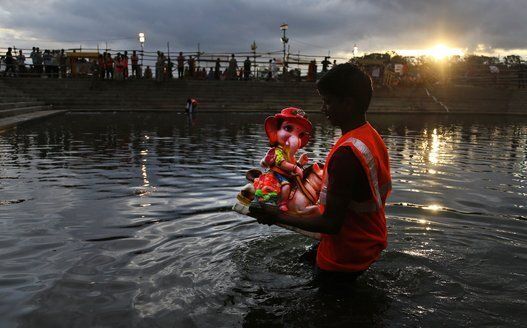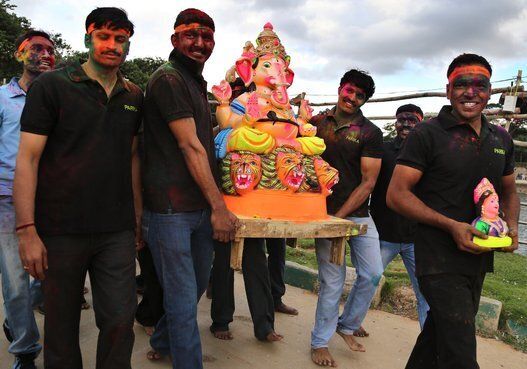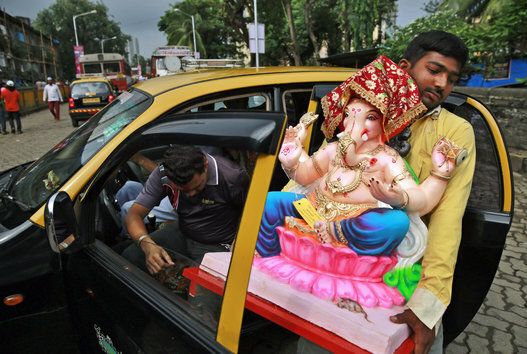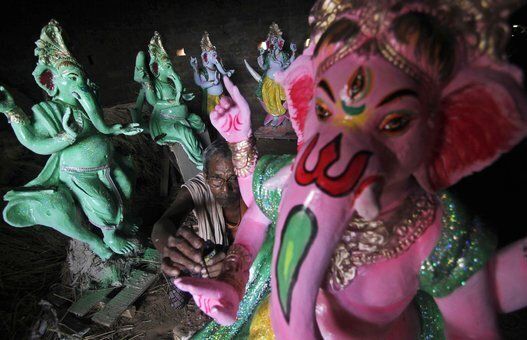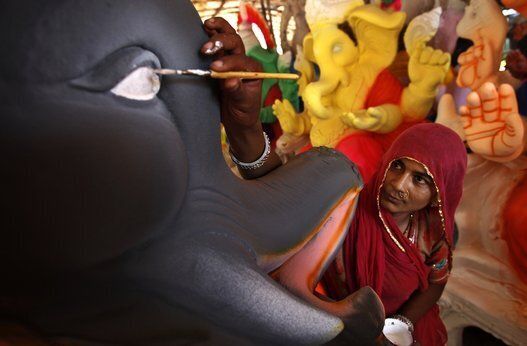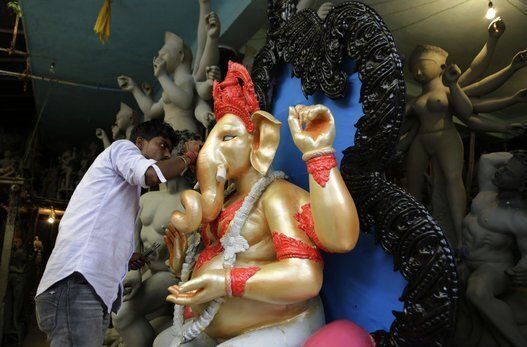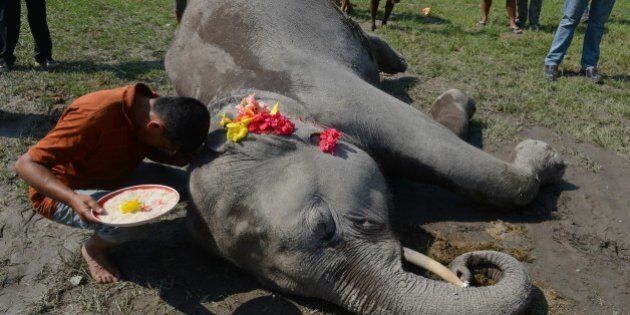
A baby elephant has been orphaned after it was captured with its mother from the Peppara Forest in Kerala (India), and taken to a local elephant camp. Apparently the pair was trespassing an agricultural land when the tribal community in the outskirts of the forest lit up high decibel fireworks to scare off the animals.
Unfortunately though, the sparks landed on the poor female elephant and inflicted serious burn wounds on its body, making it impossible to return to the forest.
Worse yet, an "inexperienced veterinary officer," as my source in India reports, who was called to the scene, allegedly administered seven tranquilizer shots to capture the injured elephant. The mother and the calf were then transported to Konni elephant camp, where the adult elephant was treated, but sadly, it died a painful death after five days of suffering high fever and internal trauma.
The "Heritage Animal Task Force" (HATF) secretary Mr. Venkitachalam claims that the veterinarian had no valid degree from the government run Wildlife Institute of India in Dehradun, and therefore used tranquilizing gunshots indiscriminately on an already ailing wild elephant.
"A Kerala veterinary doctor tranquilized it several times, violating the guidelines issued by Project Elephant for capturing wounded wild elephants. As per these guidelines, the forest authorities have to use the help of trained captive elephants to capture the wounded wild elephant so as to minimize both external and internal injuries during such a capture."
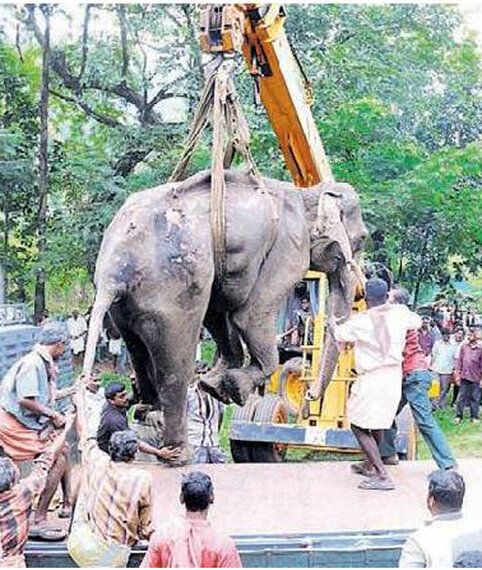
Female Adult Elephant Succumbed to Fire Burns and Internal Trauma
Photo: courtesy Mr. Venkitachalam
Meantime, I have been informed that instead of cracking down on the offenders, Kerala State Government has made an unilateral decision (without consulting the Central Government of India) to relax the rules for firing wild elephants that trespass croplands, once again violating the Wildlife Protection Act, 1972. This dangerous precedent setting move is of grave concern, as other states could follow suit.
"The State Government alone cannot introduce a new plan of action for instant killing of any wild animal whenever they trespass the fringe areas of forest."
When you think about it seriously, it's humans that are trespassing the forestland and encroaching into the homes of these elephants. But who's to punish the offenders who rob the wildlife of their food and home, and then turn around and hurt the poor animals that have nowhere to go?
Despite the existence of environmental regulations in India many people get away with the worst kind of atrocities against nature and wildlife. It is imperative for the State and Central Governments of India to work collaboratively and enforce laws that deter crime against the natural world.
The situation is dire for Asian elephants as there are approximately 30,000 left on the planet with around 23,000 of them in India, and therefore protecting every single Asian elephant is necessary for the long term survival of this endangered species.
But the harsh reality is, with human population growing at such an exponential rate in India - 1.27 billion in 2014, conflict with wildlife will only intensify, as habitat loss forces elephants into close quarters with humans.
In their quest for food, a single elephant can devastate a small farmer's cropland in just one feeding raid. Croplands being at the periphery are easy for elephants to access, but unfortunately the outcomes could be tragic and devastating, as was the case with the female elephant that succumbed to its burn injuries from fireworks.
It's hard to even comprehend that a technologically advanced country is still clinging on to such archaic and barbaric ways for self-defense, instead of investing in modern and easy to implement methods such as recordings of tiger or swarms of bees. This would not only alleviate the human elephant conflict, but also the pain and suffering of wildlife.
In order to create a compassionate society and a sustainable planet, conservation of nature and wildlife has to become a top priority for global leaders. Humans need to stop mass production of their own species and material goods that are polluting our planet and decimating our natural resources. Thoughtful and pro-active approaches need to be implemented in order to mitigate human wildlife conflicts, and this can be created only through awareness and education.
ALSO ON HUFFPOST:
